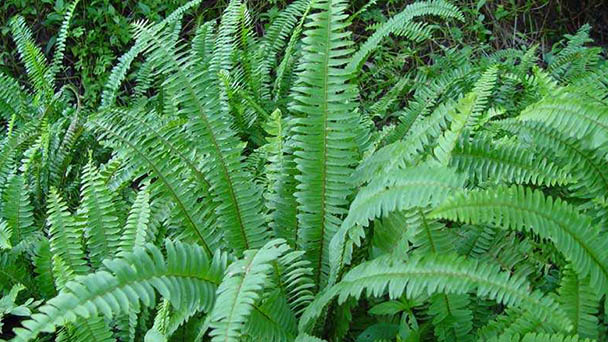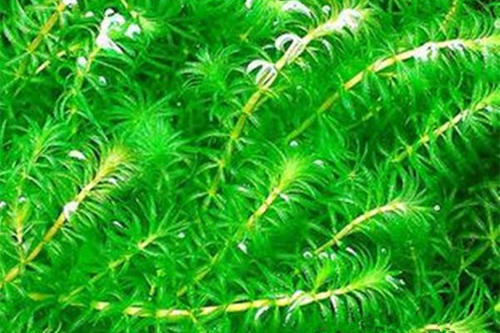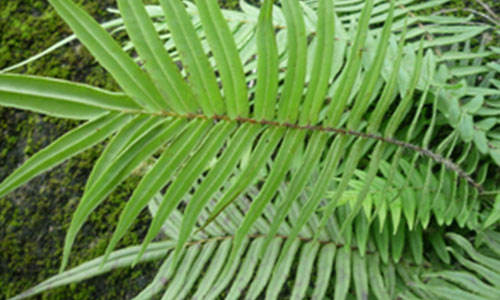Pteris Vittata L profile
Written by Maggie
Nov 27 2020

Pteris Vittata L is widely distributed in China tropical and subtropical, with the southern slope of the Qinling Mountains as the northern limit of its distribution in China. From Shaanxi, Gansu and Henan in the north, from Zhejiang in the east, through Fujian, Jiangxi, Anhui, Hubei and Hunan, to Sichuan, Guizhou, Yunnan and Xizang in the west, to Guangxi, Guangdong and Taiwan in the south, on raw calcareous soil or limestone. Pteris Vittata L never grows on acidic soils and is an indicator of calcareous soils and limestones, growing in soils with a pH of 7.0-8.0.
Pteris Vittata L picture

Pteris Vittata L morphological characteristics
Pteris Vittata L plant height is (20) 30-100 (150) cm. Rhizomes are erect, short and stout, 2-2.5 cm thick, woody, densely yellow-brown scales.Leaves tufted. Stalks are hard, 10-30 cm long or longer, base 3-4 mm thick, dark to light brown, densely covered with the same scales on rhizomes when young, gradually thinning. The leaf is blade obliquely aciculate oblong, 20-90 cm long or longer, 5-25 cm wide or wider, primary pinnate. The apical pinna shape is with lateral pinnae, lateral feather most (up to 40), alternate or sometimes nearly opposite, lower pinnae alienation, about 3 -- 4 cm, oblique, sessile, with rachis connotation, feather down gradually shortened, basal pinnae only for ear shape, central longest pinna, narrow linear, 6-15 cm long 5-10 mm wide, apex abruptly acuminate, base expanded and shallow heart shape. its two sides are slightly into the ear shape, ear, larger and often covered with leaf shaft. The interval is between the pinna about 1-1.5 cm wide, infertility was fine and homogeneous serrate. Main veins are sub uplifted and lightly grain-colored, lateral veins slender, dense, obliquely spreading, simple or bifurcated. Leaves are thinly leathery after drying, dark green, glabrous, glabrous. In mature plants, almost all the pinnacles were fertile except the lower shortened pinnacles sterile. In different habitats, the body size varies greatly.
Pteris Vittata L growing environment
Pteris Vittata L calcareous soil or limestone, up to 2000 meters above sea level, also often in stone gaps or walls.

Pteris Vittata L distribution scope
Pteris Vittata L is widely distributed in tropical and subtropical China, with the southern slope of the Qinling Mountains as the northern limit of its distribution in China. From Shaanxi (south of Qinling Mountains), Southeast Gansu (Kang County) and southwest Henan (Lu, Xixia, Neixiang and Zhenping) in the north, from Zhejiang in the east, through Fujian, Jiangxi, Anhui, Hubei, Hunan, Sichuan, Guizhou, Yunnan and Xizang in the west, to Guangxi, Guangdong and Taiwan in the south.It is also widely distributed in other tropical and subtropical regions of the Old World. Type specimens were collected from Guangdong.
The main value of Pteris Vittata L
China is rich in nonferrous metal mineral resources, with arsenic reserves accounting for 70 percent of the world's total. Mining and smelting can cause arsenic pollution. It was found in the experiment that as Pteris Vittata L gradually grew and grew taller, the arsenic concentration in the feather leaves also increased. In the second generation of reproduction and the second crop after cutting, Pteris Vittata L still maintained a strong arsenic enrichment characteristic, which proved that its arsenic enrichment function had obvious genetic characteristics.

Latest Updated
- Benefits of Bugleweed - 7 Science-backed Health Benefits
- Bugleweed Dangers & Side Effects - Is It Poisonous?
- How to Plant Evergreen Trees - What You Should Know
- When to Plant Evergreens - Grow Guide for Evergreen Trees
- 12 Wonderful Evergreen Shrubs for Your Garden
- 12 Popular Evergreen Plants with Pictures for Beginners
- When And How To Prune A Lilac Bush Like a Pro
- How to Grow & Care for Lilac Vine (Hardenbergia Violacea)
- Japanese Lilac Tree (Syringa Reticulata) Care & Propagation Guide
- Shumard Oak Pros and Cons - What to Know
Popular Articles
- Winter maintenance of Antirrhinum Majus
- How to Grow Terminalia Mantaly Tree
- How to Grow and Care for Crossostephium Chinense
- How to grow Antirrhinum Majus in spring
- Peristeria Elata (Dove Orchid) Profile: Info & Care Guide
- Underwatered Snake Plant (Sansevieria Trifasciata) - Signs And How To Fix
- How to Care for Brazilian Jasmine Plant (Mandevilla Sanderi)
- How to Grow & Care for Graptopetalum Purple Delight in Summer
- Rosa Chinensis (China Rose): Plant Growing & Care Tips
- How to Care for Baby Sun Rose (Aptenia Cordifolia)